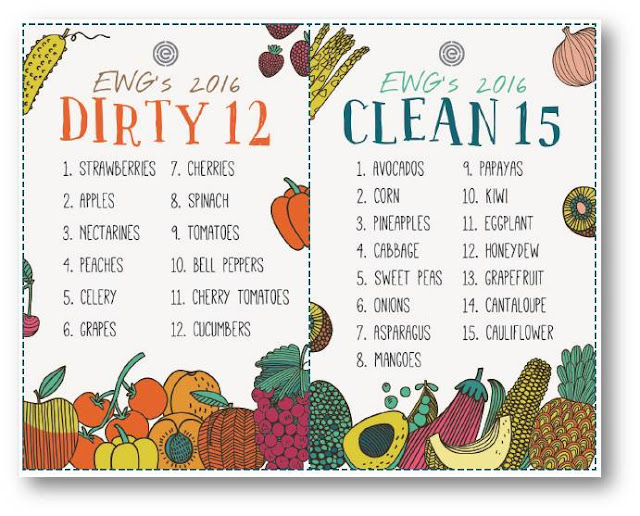Environmental Working Group Shoppers Guide to Pesticides helps you navigate the produce section of the grocery store with your sanity intact and a little more money in your pocket.
Have you noticed that the availability of organic produce is getting better and better? I just returned from a major food tradeshow and organic certified foods were everywhere, from organic black garlic to dried blueberries. And even Costco has said they can’t keep up with the demand for organic produce.
That’s good news all around. Organic farming is much better for the environment than factory farming, which relies heavily on synthetic fertilizers and pesticides. Organic farming is also a lot safer for farm workers. And, when you consider pesticide residue, organically grown food is better for us.
How to decide when to buy organic:
The improved selection is encouraging but more often than not organic produce is still more expensive than conventionally-grown produce. So it’s a trade-off: worrisome pesticide residue on regular fruits and vegetables or a bigger grocery budget when you buy organic produce.
To help you manage your grocery budget and reduce your family’s exposure to pesticides Environmental Working Group, a research organization based in the U.S., publishes an annual Shopper’s Guide to Pesticides.
In the guide, EWG lists the 12 fruits and vegetables with the highest pesticide residue and the 15 fruits and vegetables with little or no pesticide residue. They compile the lists by combing through the U.S. Department of Agriculture pesticide testing database.
The guide isn’t intended to stress you out. It’s a tool to help you navigate the produce section of the grocery store with your sanity intact and a little more money in your pocket.
-
The Clean 15 list features produce that has little to no pesticide residue by the time it reaches your plate. Spend more of your grocery dollars on this list: Avocados, corn, pineapple, cabbage, sweet peas, onions, asparagus, mangoes, papaya, kiwi, eggplant, honeydew, grapefruit, cantaloupe, cauliflower.
-
The Dirty 12 are those that you can consider buying organic (if available) or simply buy less often to reduce your family’s exposure to pesticides: Strawberries, apples, nectarines, peaches, celery, grapes, cherries, spinach, tomatoes, bell peppers, cucumbers.
All produce is tested according to how it’s usually consumed: bananas are peeled, peaches are washed.
This is the first year that apples haven’t topped the list and it shows that cheap, year-round strawberries come at a cost. EWG’s analysis if the U.S. Department of Agriculture’s tests found that 40 percent of the strawberry samples had residues of 10 or more pesticides.
The worrisome part of this is that pesticides, and acceptable levels of pesticides, are approved for use based on individual data. But farmers can use multiple kinds of pesticides on a single crop and there is no research on how these mixtures of pesticide might affect us and the environment. There is also no research on how our bodies handle multiple pesticide residues on the variety of fruits and vegetables that we consume day in and day out. It’s this cumulative effect that buying organic helps you minimize.
Because it can be hard to remember which produce is on which list, the Environmental Working Group website offers an easy printout of the Dirty 12 and Clean 15 that’s handy to keep in your purse or glove compartment. If you’d like to see the full list of all 40 fruits and vegetables tested visit www.ewg.org






